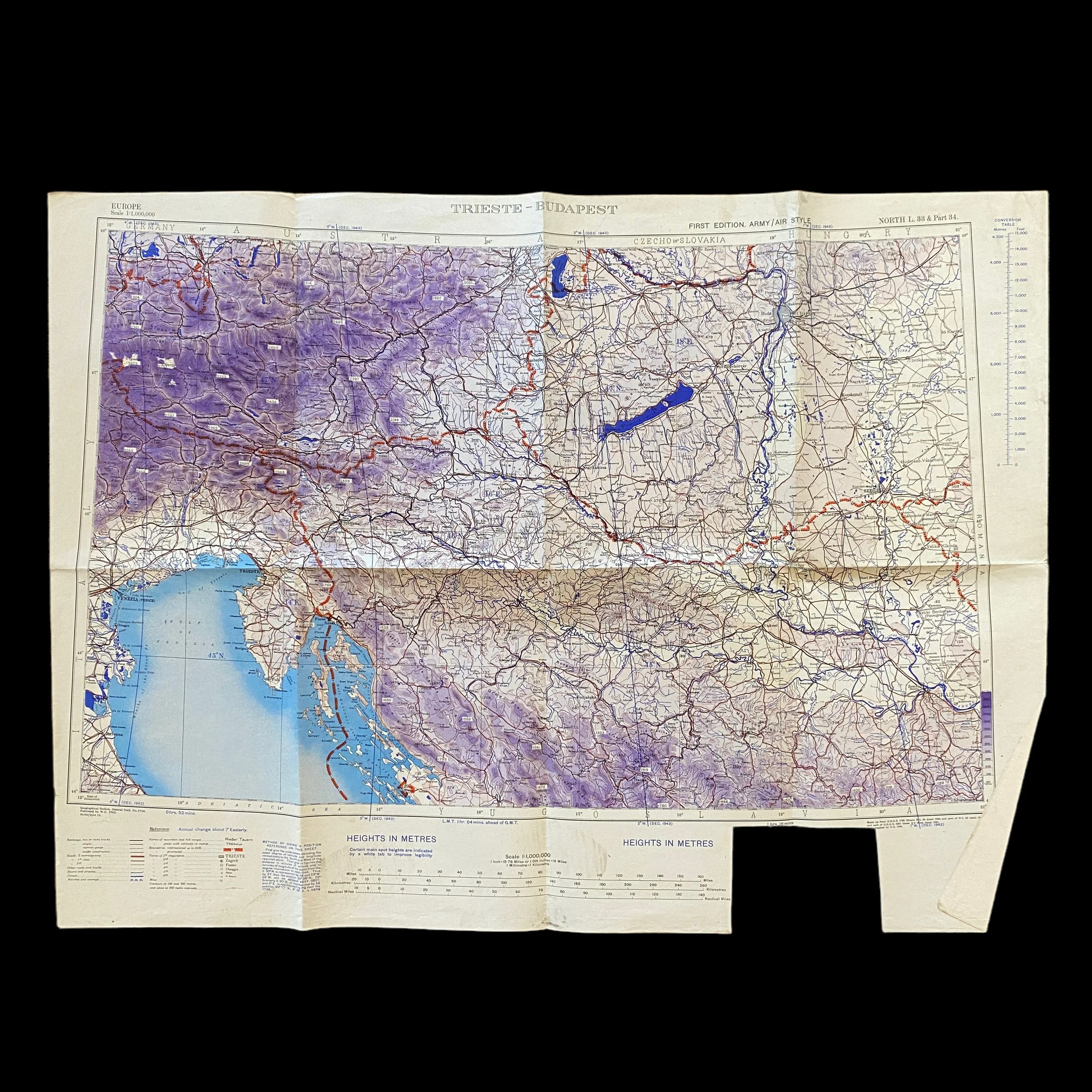WWII 1943 U.S. Navigators "Trieste to Budapest" Bombing Raid Air Missions Map*





















WWII 1943 U.S. Navigators "Trieste to Budapest" Bombing Raid Air Missions Map*
Comes with hand-signed C.O.A.
This incredible and museum-grade WWII U.S. air navigations map is dated 1943 and was used by the U.S. and Allied during strategic bombing raid missions in the European Theater. This air map was used by U.S. bombing navigations as they directed their aircraft groups to the targets in the Trieste to Budapest region.
During World War II, the United States launched several bombing missions throughout Europe, including the Trieste to Budapest region. These bombing campaigns were a crucial part of the war effort, as they helped to weaken the enemy's infrastructure and military capabilities. However, they also had a devastating impact on civilian populations and left a lasting legacy of destruction.
The bombing missions in the Trieste to Budapest region began in late 1943 and continued until the end of the war in 1945. This region was strategically important because it was a major transportation hub for German forces and served as a supply line for troops fighting in Italy and the Balkans. The U.S. Army Air Forces launched several missions against this region, targeting railway lines, bridges, and other key infrastructure.
One of the most significant bombing missions in this region occurred on February 14, 1944, when the U.S. Army Air Forces launched a massive attack on the Hungarian capital of Budapest. The mission involved over 500 bombers and resulted in the destruction of much of the city's industrial and residential areas. The attack also caused significant civilian casualties, with an estimated 20,000 people killed or injured.
In addition to the bombing of Budapest, the U.S. Army Air Forces also targeted other cities and towns throughout the Trieste to Budapest region. These missions often resulted in the destruction of important transportation infrastructure, such as railway lines and bridges, as well as the damage or destruction of key military targets.
The bombing campaigns in this region had a significant impact on the outcome of the war. By destroying transportation infrastructure and disrupting supply lines, the U.S. Army Air Forces were able to weaken the enemy's ability to conduct military operations. This, in turn, helped to pave the way for Allied forces to make significant gains on the ground.
However, the bombing campaigns also had a devastating impact on civilian populations. The destruction of residential areas and the high number of civilian casualties caused widespread suffering and hardship. The bombings also left a lasting legacy of destruction, with many communities in the region still struggling to rebuild in the aftermath of the war.
Furthermore, the bombing campaigns in this region have been subject to significant criticism and debate in the years since the war ended. Some argue that the bombing of civilian populations was unjustified and constitutes a war crime, while others maintain that the attacks were necessary to achieve victory.
In conclusion, the bombing missions in the Trieste to Budapest region during World War II were a critical part of the Allied war effort. They played an important role in weakening the enemy's infrastructure and military capabilities and helped to pave the way for Allied victory. However, these missions also had a devastating impact on civilian populations, and the legacy of destruction they left behind is still felt today. As we continue to reflect on the events of World War II, it is important to remember the sacrifices made by all those who fought in the conflict, and to strive to create a more peaceful and just world for future generations.